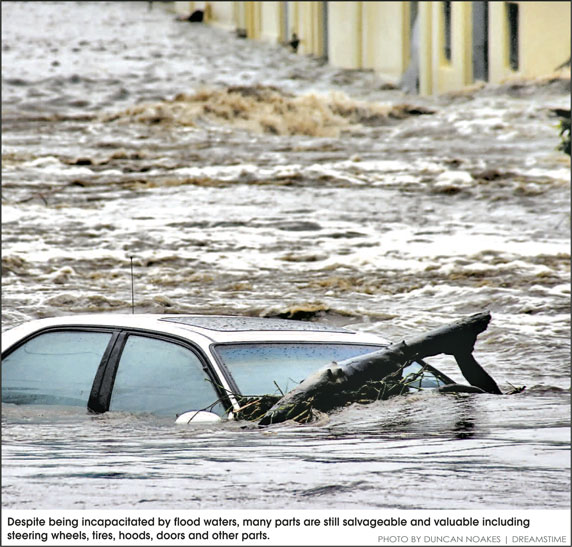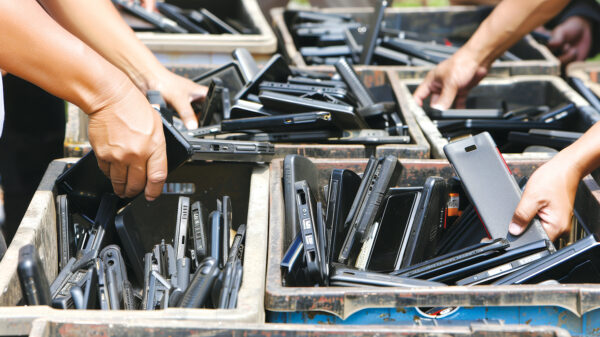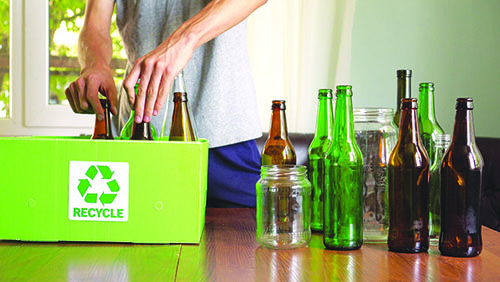by MAURA KELLER
In late September, Hurricane Ian left a destructive path as it made landfall in Florida and traveled up the East Coast of the U.S. According to Cox Automotive, the parent company of Kelley Blue Book, an estimated 30,000 to 70,000 vehicles have been destroyed due to flooding and damage incurred during the hurricane. This influx of destroyed vehicles is expected to challenge the automotive recycling industry throughout the region.

Barry Porter, specialty quality assurance team lead at Sedgwick, said Hurricane Ian was devastating to the southeastern U.S., and vehicles of any kind are susceptible to excessive moisture – especially salt water.
“Automobiles, heavy equipment, RVs, golf carts and motorcycles all have an enormous amount of electronics today, particularly in and under the seat and along the floorboards. As a result, if the water line has risen to the seat level or just below the dash, the vehicle’s main electronics systems become compromised by this moisture, and most insurance carriers consider the damage a total loss and the vehicle is totaled,” Porter said.
As Porter explained, it has been estimated that up to 70,000 vehicles have been totaled in the areas affected by Ian and according to Carfax, as many as 358,000 have some form of water damage.
“This puts pressure on the insurance industry, recyclers, car dealers, repairers and others to handle the demand to dispose of and replace these vehicles,” Porter said. “Demand for vehicles was starting to even out before the hurricane, but now with this many vehicles being totaled, there will be an upwards pressure on new and used car values. The insurance industry and their vendors were strained by the number of losses, but they are working to catch up and return them to normal levels.”
Stefan Kleinekoort, founder and chief executive officer of The Driver Advisor, said the flooding of vehicles in the aftermath of hurricanes is a significant problem for recyclers.
“As cars and trucks are submerged, their batteries discharge, and their motors turn off. This makes these vehicles very difficult to recycle since they must be disassembled down to the component level to extract all of their usable materials,” Kleinekoort said.
Fortunately, recycling companies have developed special facilities designed specifically for dealing with flooded vehicles. As Kleinekoort explained, these companies use high-pressure water jets or vibration machines to open the chassis and remove salvageable materials like plastic and metal parts.
“The major challenge for recyclers is that many flooded vehicles are wholly ruined and cannot be recycled,” Kleinekoort said. In these cases, the car will have to be scrapped or burned to release any hazardous materials that may still be inside.
Flooded vehicles pose a significant challenge for recyclers, but fortunately, some companies can help. If a consumer has a flooded vehicle that they would like to recycle, they can get in touch with their local recycling company or check their websites for information on how they deal with this type of material. Some recyclers may discard them, while others may try to find an alternate use. It ultimately depends on the individual recycling company and its policies regarding end-of-life cars.
John David Hernandez, owner of Assurance Automotive, a locally owned and operated auto repair shop in Miami, Florida, said Miami didn’t see the damage that places like Fort Myers and Coral Gables experienced.
“Speaking with other dealerships and auto repair shops, the damage throughout Florida to vehicles was immense,” Hernandez said. “Outside of flooding, we’ve seen a lot of vehicles that are considered total losses by insurance companies from trees, debris, and branches landing on vehicles.”
Once a car has experienced a certain amount of flood damage, the title is not salvageable. That means someone who wants to buy a vehicle would not be able to get bank financing and likely couldn’t insure the car as well.
“However, not all cars that experience flood damage are totaled. It’s possible to dry the car out and repair any electrical damage that the flood damage caused,” Hernandez said. “For insurance purposes, however, it’s likely any significant flood damage would make the car a total loss.”
Automotive recyclers are able to use the parts from a vehicle to rebuild other cars. Hurricanes and floods may damage the car, but a lot of the parts of the vehicle still remain unaffected and can be repurposed.
“You might have a vehicle that won’t turn on because of flood damage, but that doesn’t mean there’s damage to the steering wheel, tires, hood, doors or other parts that are worth salvaging,” Hernandez said.
Space is also an immediate concern when there’s a huge flood. Suddenly there are all these damaged vehicles with parts that are salvageable, but there is nowhere to store them.
“Assurance Automotive also has a towing and vehicle shipping business, and it’s impossible to get to all the vehicles in a timely manner when a flood has caused extreme damage to that many vehicles like we saw with Hurricane Ian,” Hernandez said.
An additional area of concern facing automotive recyclers is the influx of EV vehicles that have also been in flood damaged areas. The current culture of going green has moved the electric vehicle (EV) market forward much faster than the standard automotive industry, which normally has the time to test these vehicles in different conditions over time. As a result of the EV’s compressed timeline, the automotive recycling and insurance industries are facing challenges that they haven’t experienced such as EVs under water.
“These vehicles have been designed to be safe around water, but salt water is especially corrosive so when these vehicles are exposed for an extended time, items can short out and cause fires, which can be difficult to extinguish,” Porter said.
Hernandez added that floods can be especially detrimental to EV cars in coastal Florida because the flooding is generally from salt water. Salt water mixing with a lithium-ion battery can, in rare cases, combust.
“A flood from heavy rainfall in a different state isn’t likely to cause an EV to burst into flames because it’s the salt water mixed with the lithium-ion battery that causes the ignition of the fire,” Hernandez said. “Typically, the challenge with flooding is that it ruins the battery, which is incredibly expensive to replace. While a vehicle fire is never good, it’s also rare and the amount of cars that burst into flames was a very tiny percentage of the amount of electric vehicles that flooded during the storm.”
Kleinekoort further pointed out that flooding is a significant challenge for recyclers and can often make it very difficult to extract usable materials from wrecked cars and trucks.
“Fortunately, some companies specialize in dealing with this type of material, and they will be able to help consumers recycle cars or trucks safely and efficiently,” Kleinekoort said.
Published in the December 2022 Edition







